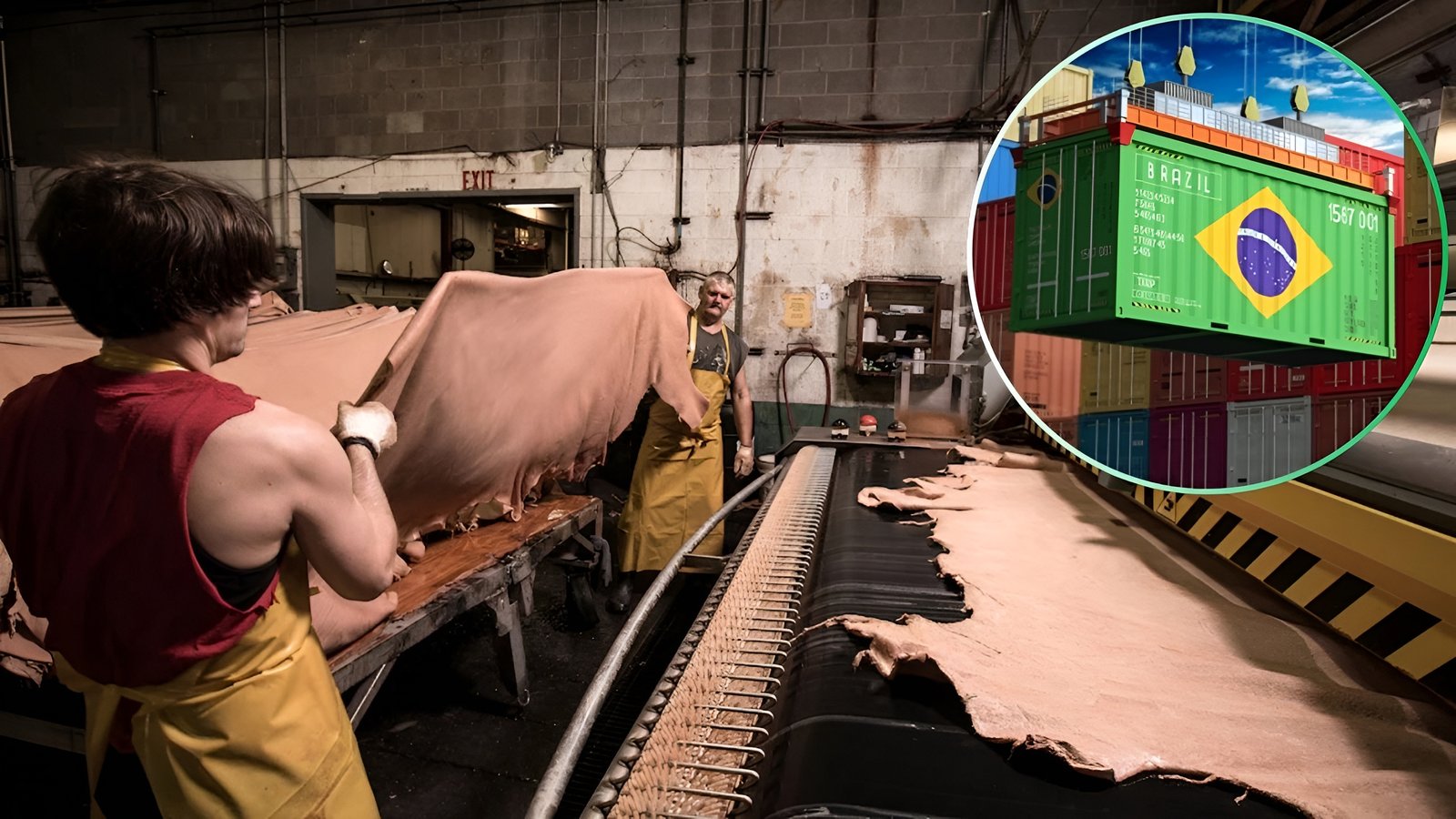In recent times, the Government of India and the Council for Leather Exports have set an ambitious target of achieving a $50 billion turnover for the Indian leather industry by 2030. This bold vision has sparked widespread discussion and debate within the industry.
When this topic came up for discussion, the question on everyone’s mind was clear,
How do we achieve this goal or will it remain just an ambitious target?
In this article, we will delve into the strategies and action plans necessary to turn this vision into reality.
From government support and industry collaboration to enhancing quality and revamping education.
We will also explore the key elements that will drive the industry forward and help us achieve the $50 billion target by 2030.
Embracing the Challenge, Turning Skepticism into Opportunity
As usual, naysayers are always present, with many dismissing this ambitious target as a “daydream.”
However, from my perspective, the goal and challenge should be embraced. Why not give it a try?
Whenever we take up a challenge, it opens up many opportunities.
We may also achieve the target which we set out to achieve and that will be phenomenal growth.
But, even if we don’t achieve the target in full, making significant progress, let’s say up to 50% that would be about $25 billion will also represent a substantial leap forward from where we are today.
Moreover, any effort made will yield valuable insights and lessons, regardless of whether we reach the full 100%.
Rejecting the challenge outright would mean remaining stagnant at where we are today.
By making a concerted effort, we can explore untapped areas, new markets, and emerging opportunities and these thoughts have shaped my perspective and the approach outlined below.
Though I have received mixed responses, I am eager to share my point of view and the pathway towards this significant goal.
The following sections will be a detailed overview of the current Indian Leather Industry followed by the strategies and sector wise opportunities needed to create a comprehensive roadmap for achieving the $50 billion target.
Overview of the Indian Leather Industry
To understand the current state and future prospects of the Indian leather industry, let’s review our export performance over the past four years
Looking ahead, these are the ambitious targets that have been set by various stakeholders:
- Mr. Jalan, the current Chairman of Council for Leather Exports (CLE) has projected a $13 billion target by 2030.
- Mr. Sanjay Leekha, the former Chairman of Council for Leather Exports (CLE) envisions a $47 billion milestone by 2030.
- Mr. Piyush Goyal, The Union Minister of Commerce & Industry, aims for an impressive $50 billion by 2030.
There is a doubt in the minds of people whether we can even reach a $10 billion target by 2030.
These are the compound annual growth rates (CAGR) required to meet these goals are substantial:
CAGR $5.26 – $10 Billion in 7 years – 10.46%
CAGR $5.26 – $13 Billion in 7 years – 13.80%
CAGR $5.26 – $47 Billion in 7 years – 36.73%
CAGR $5.26 – $50 Billion in 7 years – 37.95%
Despite the doubts, our focus should remain on striving towards these targets.
Even if we fall short of $50 billion, achieving at least 50% of the target that will be about $25 billion would still represent significant growth and progress for the Indian Leather Industry.
Strategic Roadmap for Achieving the $50 Billion Target
To reach the ambitious $50 billion target for the Indian leather industry by 2030, a comprehensive and strategic roadmap is essential.
Here’s a detailed plan outlining key actions and considerations
1. Make a road map as to how it should be achieved.
2. List down all the pros & cons.
3. Highlight areas where we would require Government support. Not necessarily grants.
4. Let all the Leather & Leather Products Industry come under one umbrella.
5. Consortium within the Country and Conglomerate Internationally to achieve this.
6. Move the industry from being a family run business to corporate level in real sense with responsibility and accountability.
7. Footwear would mean in general, apart from leather footwear, the Sports and Non-leather Footwear. How do we get them together?
8. Quality to be produced and not controlled and no Government controls or red tapism for Babu’s to make money.
9. Revamp the Education System in all the leather and leather products colleges and institutions to create future young entrepreneurs, designers, technical people and artisans.
10. Create a Governing body with people who do not have any vested interests except the passion for the industry.
Sector Wise Opportunities (Leather Sector – Part 1)
Leather Sector
a) Avoid Low-Value Leather Sales
Stop selling cheap leather or low value just for personal turnover.
b) Optimize Buffalo Leather
Buffalo is our strength and 60% of it is better grade and 40% is lower grade.
Work on the better grades of 60% to promote as Shoe Leather emphasizing thickness and durability.
c) Focus on Upholstery for Furniture
Make better quality finished furniture leather to achieve better pricing.
Focus on producing leather suited for couches rather than sofas, with an emphasis on value addition.
d) Develop Automotive Leather
Expand the use of buffalo leather for automotive applications, Utilize leather splits effectively for seat backs, dashboards, and hand-rests.
e) Revive Goat Leather
Capitalize on goat leather by reintroducing glazed and polished kid leather into fashion trends, highlighting its unique qualities.
f) Value addition on Shoe suedes.
g) Value addition on Garment suedes.
h) Upgrade Lining Materials
Don’t go for cheaper or low value lining. Work on upgrading these leathers to realize better value.
i) Focus on Women’s Classic Shoes
Concentrate more on creating leathers for women classic shoes rather than sandals.
j) Utilize Sheep Leather for Classic Shoes
k) Enhance Sheep Leather for Garments
Sheep for Garments as value added Nappa or other grain finishes and not for low value.
l) Specialize in Glove Leather
M) Maximize the use of Indian Cow Leather
Indian Cow has the best grain structure and should be converted into high value bag leathers, capitalizing on its unique qualities.
Conclusion
In pursuit of the $50 billion target by 2030, the Indian leather industry stands at a pivotal juncture. The strategies outlined herein provides a foundation for driving growth and overcoming the challenges that lie ahead.
From innovative practices and optimizing resource use to enhancing education and fostering industry-wide collaboration, every step we take will bring us closer to realizing this ambitious vision.
While skepticism may persist, the pursuit of this goal presents a valuable opportunity for transformation and advancement.
As I said earlier, achieving even a significant portion of the target, whether $25 billion or more, would still represent a major leap forward from where we are today.
As we move forward, it is essential for all the stakeholders to remain focused, adaptive, and united in our efforts.
Let us work collectively to turn this vision into reality and set a new benchmark for the global leather industry.
I welcome support, feedback, and constructive criticism as we work together to realize this vision. Your insights will be invaluable as we refine our strategies and push towards our goals.
Stay tuned for Part 2 of our series, where we will delve into the sector-wise opportunities within the footwear industry (both leather & non-leather), and Part 3, focusing on the leather products sector.
We will continue to build on this foundation, exploring further opportunities and strategies to drive the Indian leather industry towards its $50 billion target. I encourage you to share your thoughts and join the discussion in the comments below.
Related articles – Indian Leather Industry Executives Head to Russia to Explore Business Opportunities









